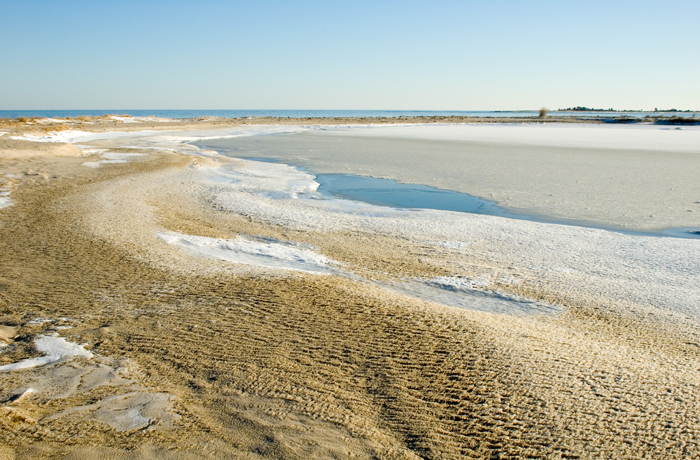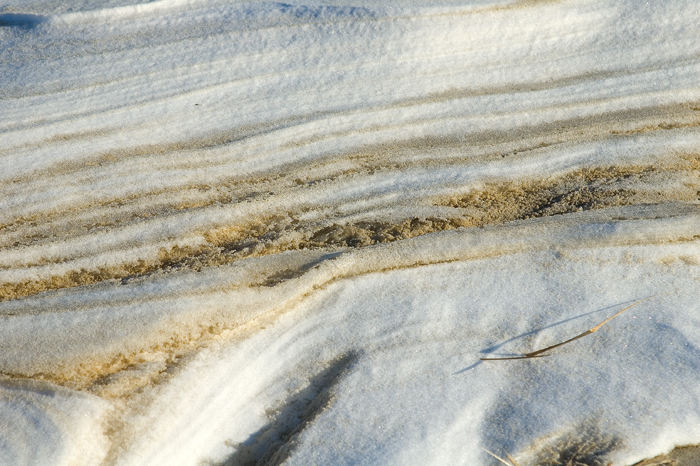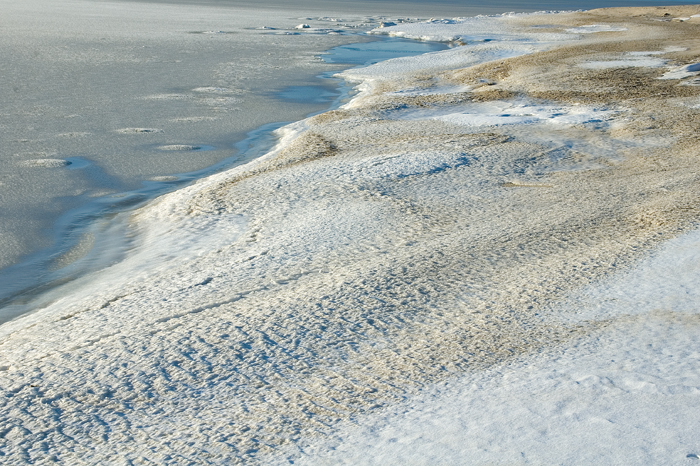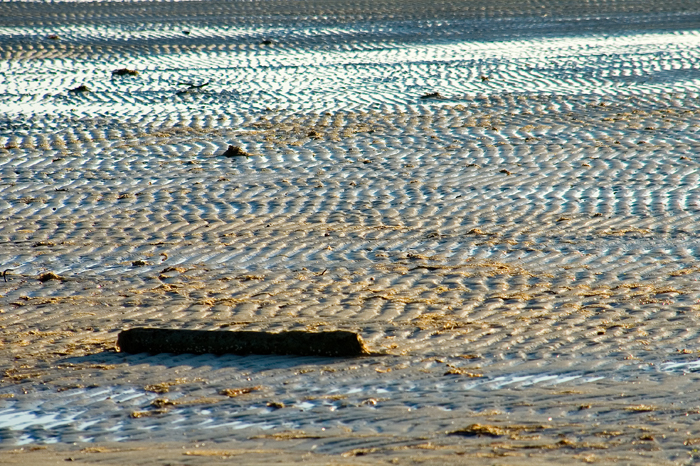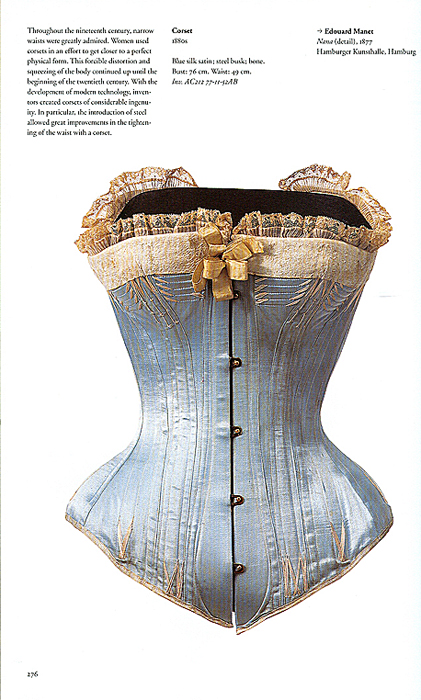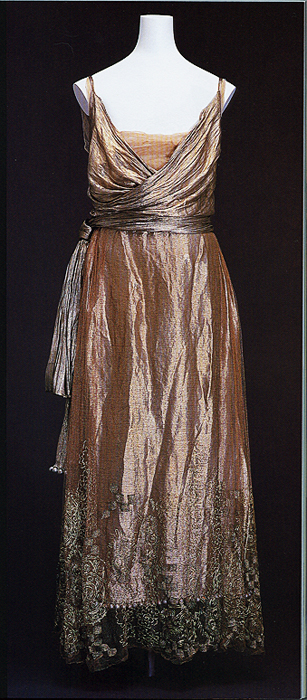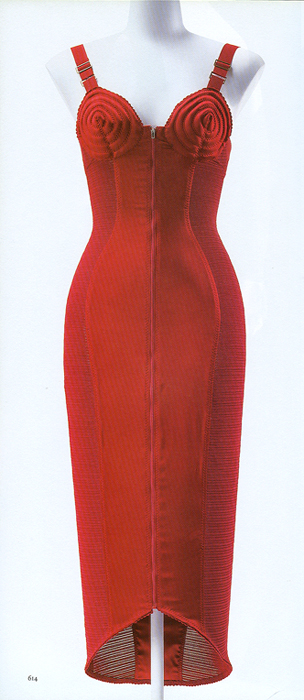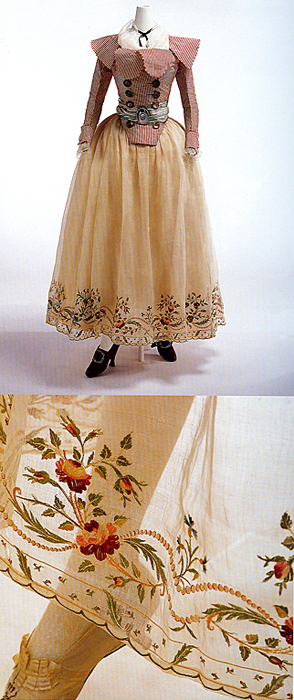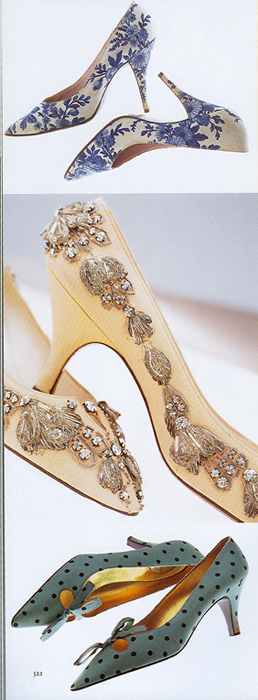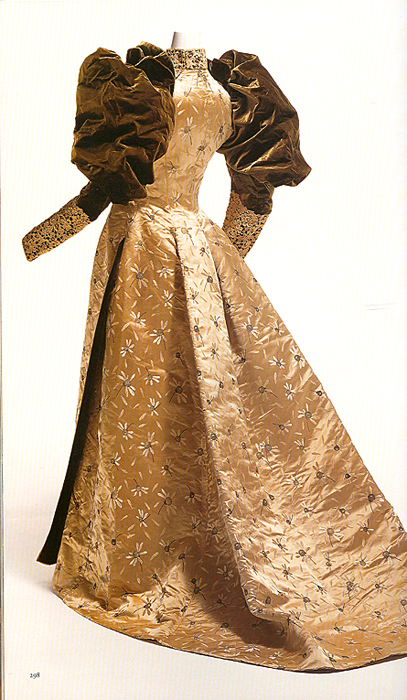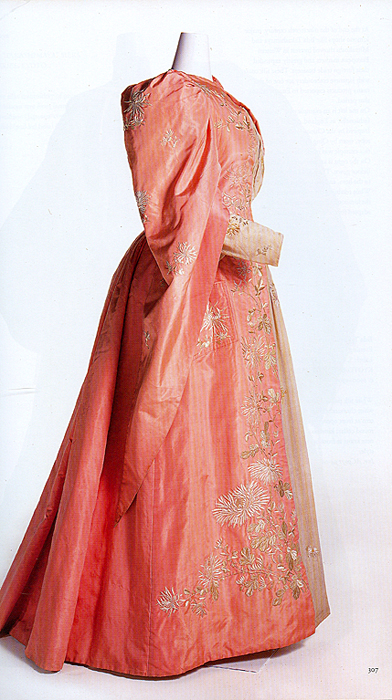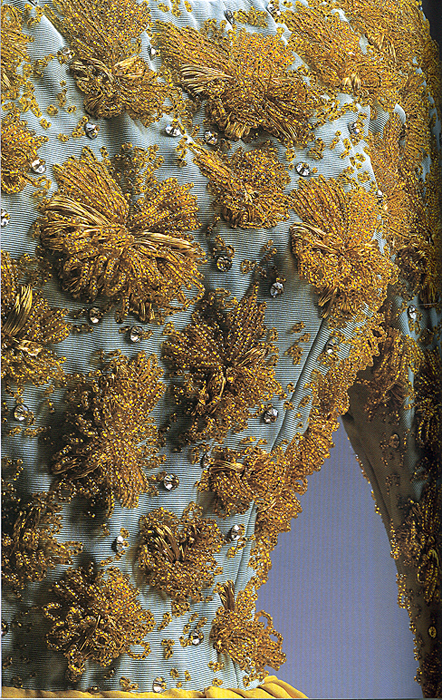The ultimate in scenic model building. Absolutely amazing! This is a model made with, with, all sorts of surprising stuff. Click HERE to see many more.
Coralie Bickford-Smith: The Power of a Limited Palette :: Articles :: The 99 Percent
I enjoyed this article on design process. She talks about the importance of color and some of the constraints that actually help her make choices.
The Morgan Library & Museum Online Exhibitions – Demons and Devotion: The Hours of Catherine of Cleves
The Morgan Library has posted every page of this spectacular illuminated manuscript on it’s web site. You can zoom in and see spectacular detail of 129 pages.
NYTimes – On New, Spare Broadway, Less Scenery to Chew
My comment: Excellent minimalism requires ruthless control of every visual element. Sometimes this requires more cash than just throwing scenery on stage. To do minimalism well must be a design commitment first. Not primarily financial one.Here’s the article:
_______________________
For the big Broadway musical, surviving the recession often means that the sets are rarely stars anymore.
You don’t hear many audible gasps these days when the curtain rises, or when scenery transforms to reveal a theatrical vision.
Not like the oohs and ahhs of audiences at Rodgers and Hammerstein musicals like “The King and I” in the 1950s, Stephen Sondheim and Hal Prince productions like “Follies” and “Sweeney Todd” in the ’70s, or later spectacles like “Starlight Express,” with its roller-skating apparatus, and “Miss Saigon,” with its helicopter — neither of which, to be sure, was for everyone.
Instead, this season on Broadway some theatergoers and critics have been asking whether musicals have become increasingly cost-conscious with their visual artistry, and with mixed results.
The four major musical revivals so far this season — “Bye Bye Birdie,” “Finian’s Rainbow,” “Ragtime” and “A Little Night Music” — were panned in some quarters for stage design that seemed thinly conceived or even flimsy.
Even the most commercially successful recent productions of musicals — “Billy Elliot: The Musical,” “Hair” and “West Side Story” — lean to the stripped-down, partly in hopes of highlighting the choreography and plot.
The drift toward smaller-is-better Broadway musicals will continue to be scrutinized through the spring, as producers and directors weigh whether scaled-down productions like “Hair,” which recouped its $5.8 million capitalization in five months, are a smarter way to go in this economy than extravaganzas like “Spider-man: Turn Off the Dark,” which delayed its February previews because of difficulty raising money for its estimated budget of $50 million.
An April revival of “La Cage aux Folles,” while stuffed with wigs, beads and heels for its drag queens, is favoring plot, character and a small orchestra over lavish scenery. (Of course, the setting is now a small cabaret, not a glamorous nightspot.) The coming $16.5 million musical “The Addams Family” is using a fairly basic set of a musty old house and an unfussy graveyard. And “American Idiot” has a set that, while busy-looking with an array of video screens, aims for a seedy feel full of punk band posters.
Sonia Friedman, a producer of “A Little Night Music” and “La Cage,” said that while the tough economy had made investors more cautious, it had not wiped out all musical spectaculars — it just called for some productions to use greater imagination when working within financial limits.
“I do feel that intimate stagings of musicals like ‘A Little Night Music’ and ‘La Cage aux Folles’ are a smart, efficient economic model,” said Ms. Friedman, who is based in London but regularly produces on Broadway. “I do not necessarily think they are the way things will always be done now or in the future. There is room for both.”
Robert Longbottom, the director and choreographer of the Roundabout Theater Company’s revival of “Bye Bye Birdie,” which closed last Sunday, said he and his creative team had performed “serious due diligence about seeing if we could get what we wanted for the best price.” Critics and naysayers aside (in The New York Times, Ben Brantley likened the imagery to that of an Old Navy commercial), Mr. Longbottom called the show’s scenery and costumes first-rate, but acknowledged that working within confines had been challenging.
“Sometimes — if you find you don’t have the funds to have all the bricks and mortar to do every scene in every way you want — you have to be creative,” he said. “We talked about doing every single one of our large scenes in a naturalistic way. But we couldn’t quite find a visual language that conveyed a story-theater feel in every one of those scenes.”
For another major revival of his this season, “Dreamgirls,” which played at the Apollo Theater in the fall and is now on a national tour, Mr. Longbottom said he had the financial advantage of collaborating with producers in South Korea, where the show was created at a fraction of the expense of a New York production, which he estimated would have needed $14 million. (He attributed the difference largely to lower-cost construction and costume materials, and to the less expensive labor in South Korea.)
“The costumes alone were $700,000 in Korea and would have been $3 million in New York,” he said. “And the quality is brilliant — it’s not done in sweatshops over there.”
While simplified sets can save start-up costs — the spartan kitchen of “Billy Elliot,” say, cost less than the mobile forest set of “Shrek” — the financial success of a show comes down to limiting weekly running costs and selling enough tickets to cover or exceed them. Limiting running costs has less to do with fixed expenses (like sets) than with the scale of a musical (like the number of musicians, actors, dancers, crew members, costume assistants and technicians that have to be paid each week, as well as the rent for the theater).
For some Broadway veterans of musical extravaganzas, however, the recent spate of understated, austere production values often feels like a disappointing concession to the increasing expense of producing on Broadway, especially in a recession. In some instances, these veterans say, producers and directors are being creatively cost-conscious, but in other cases their shows look done on the cheap. (Plays, for the most part, cost far less than musicals to produce.)
“The smaller scale of musicals is all about money, I believe, and what I hear in a lot of conversations is people thinking out loud about how to make it small to make it more appealing to investors and producers,” said Mr. Prince, who has won Tonys as a director of large-scale works like “Showboat,” “The Phantom of the Opera,” “Evita” and musicals by Mr. Sondheim.
“When I directed the original ‘Follies’ and ‘Little Night Music,’ I didn’t really worry about those musicals recouping, and no one put pressure on me to worry about it,” Mr. Prince continued. “That’s not as true today. And I’m not sure the environment exists today to mount huge works with the calmness and confidence that we did decades ago.”
Among recent big-budget musicals, the now-shuttered “Shrek” and “Disney’s The Little Mermaid” were not able to translate inventive visions and big sets into long runs. By contrast, one of the most commercially successful new musicals, “Billy Elliot,” which recouped its $18 million capitalization in 14 months, takes place largely in a community center dance hall, and some of the most critically praised dance scenes involve no more than a chair or an empty stage.
“I was a neophyte as a producer, and basically didn’t put any budget restrictions on the creative vision,” said Eric Fellner, the lead producer of “Billy Elliot,” which won the Tony in June for best musical. “It is an expensive show, yes, but what made it successful — and what makes many musicals successful — is the quality and emotional depth of a story, brilliantly conceived characters and the beauty of a show’s music.”
The creative team behind “Hair,” which won the Tony for best revival, made a firm decision against an extravagant design, forgoing the idea of recreating Central Park within the Al Hirschfeld Theater. The “Hair” production was originally mounted outdoors in the park in summer 2008, and that environment proved popular with audiences.
“I thought that if we put the park on the stage of the Hirschfeld for the characters, and an audience member is watching from her red velvet seat, it would create two different universes and destroy the spirit of community that is essential to ‘Hair,’ “ said its director, Diane Paulus, who ultimately opted for a mostly bare stage. “What we ended up with was not only successful, but had the added advantage of being financially wise.”
Big will almost certainly be back — the commercial success of the long-running “Wicked,” which recouped its $14 million investment in 2004 after 14 months of performances, indicates that audiences still like full scale. This fall is likely to bring both Andrew Lloyd Webber’s “Love Never Dies” — a sequel to “The Phantom of the Opera,” with its chandelier a classic example of musical spectacle — and “Spider-Man,” assuming that financing holds. For now, though, productions like “The Addams Family” will demonstrate whether creativity and cost constraints can blend successfully.
“Julian and Phelim wanted to honor Charles Addams’s funny, sinister and elegant drawings,” said Stuart Oken, the lead producer of that musical, referring to its two director-designers and to the cartoonist on whose work the show is based. “And while we were all mindful of the budget, as any Broadway show is, they weren’t restricted by it. Part of their genius is creating incredibly imaginative, evocative designs that are also deceptively simple.”
Bethel Beach in Snow
After a night and a day of snow and steady winds today was glorious. By
this afternoon I’d mustered the courage to bundle up and head for Bethel
Beach Nature Preserve. It was only in the 20s but there was little wind so,
although I was out there for nearly 2 hours, I was perfectly comfortable in
all my layers.
snow-covered marsh began. Even stepping cautiously I still ended up knee
deep in marsh grass voids several times. I didn’t end up in any water
though. Whew! Here’s a selection of the 250 plus images I shot. This is my first real
attempt at shooting snow. I worked from an aperture priority and kept an
eye on my histograms – adjusting exposures accordingly. It’s very hard not
to blow out the highlights but I learned a lot.
Marsh Water Colors Observation
Nasty morning here but it cleared to spectacular blue skies with perfectly
puffy clouds. Took a break and meandered down to the marsh. Too much glare
this time of day but I was happy to get this shot. I’d observed the amazing
gradation of color on another recent walk but didn’t have my camera that
time. Excuse the blown out grasses in the foreground but I wanted to record
the way the fresh water runoff brings the amber-brown tannins down to the
salt marsh. The downward view shows the true color. The middle range
passes through a oxblood red. Then the sky reflections gradually take over
as the glassy surface recedes. Imagine trying to paint this!
NYTimes – Art Review – ‘The Drawings of Bronzino’ – At the Met, Florentine Master’s Spirited Drawings
I’ve gotten ridiculously busy and so neglecting my blog but I wanted to embed this article here in case folks miss it. Wish I could dash up to the city and have a look for myself but I’m deep into preparations for several interesting decorative painting/mural projects, preparing to teach Acrylic Fundamentals in February and studying for my final oral exam for the International Association of Color Consultants in March. So, I’ll be catching up with the blog in a few days._____________________________________________________________________
Here’s the Article
Agnolo Bronzino’s was the hand to hire for a power portrait in mid-16th-century Florence. He could turn toddlers into potentates and make new-money Medicis look like decent people. His painting shaped late Mannerism, the profane, twisty, prosthetic style that erupted, like a repressed libido, between the humanist sanctities of the Renaissance and the smells and bells of the Counter-Reformation.
Enlarge This Image Louvre Museum
Louvre MuseumThe Drawings of Bronzino “Seated Nude Youth Playing Panpipes,” in the show at the Metropolitan Museum of Art. More Photos »
Multimedia
Acrylic Foundations – at the Bay School in Mathews!
I’m happy to announce that I am scheduled to teach the following class at
the Bay School in Mathews, Va.
who may have missed foundational skills training. We will learn to see the
importance of values for expressing form, mood and space, explore the
possibilities of color mixing and color use in visual art and finish with
your own still-life painting. Acrylic paint is highly versatile and
forgiving making it a great place to start. The skills introduced in this
workshop are applicable to any visual medium. In past workshops students
have made huge leaps in their skills and understanding during this 12-hour
intensive. Come and launch your new love for painting or fill in the gaps in
your basic understanding of imagery. 4 Thursday Evenings – Feb. 11th – March 4th 6pm – 9pm Cost: $65 Class fee/$20 Materials Fee ALL Materials are provided (but if you have your own stuff you’d like to
bring along, that’s fine too!) BIO: Lausanne Davis Carpenter earned her BFA in scenery and lighting design for
the stage from SUNY Purchase. She worked as a designer and scenic artist in
NYC and regional theatres then took a 12 year hiatus from the arts while
living mostly overseas. In 2002 she returned to the US and opened Marsh
Hawk Studio – a murals and decorative painting business. In 2004 she also
returned to designing scenery and lighting for the stage. She is nearing
completion of the requirements for fully-fledged membership in the
International Association of Color Consultants and is increasingly focusing
on fine art painting. Bay School Location: 279 Main Street
Mathews, VA 23109
Past the Library; look for the blue awning) CALL: 804-725-1278 Sign up Soon!
Recipe: Ground Turkey & Lima Bean Chili
I meant to make the usual red beans & ground turkey chili today. I went to
the cupboard last night and discovered I didn’t have kidney beans. I did
have a bag of limas. So, I tossed them in some water to soak over night.
Nada. Oh well. I was definitely not venturing in to town in this weather
just for an onion – especially when I had a good supply of garlic on hand. So I just threw the following together. And, I gotta say – it’s pretty
good! Ground Turkey & Lima Bean Chili 1 Bag Dry Baby Lima Beans – soak over night. Garlic – lots
1 Tray of ground turkey
Cayenne – whole peppers from the freezer – as much as you think you can
stand. Rinse soaked beans and put in crock pot with: 2 cans chicken broth Sauté ground turkey until nearly dry. Toss in the garlic and cayenne.
Brown. Toss turkey, garlic and peppers into crock-pot. Simmer on High about 4 hours – *** Test lima beans to be sure they are soft. Add: One large can diced tomatoes. Simmer. As long as you can maintain your self control.
Enjoy!
Book Review – FASHION: A History from the 18th to the 20th Century
The Collection of the Kyoto Costume Institute – TASCHEN.
I am not a costume designer. I can operate a sewing machine but I have no idea how to put a simple dress together. Still, I couldn’t resist the eye candy in this book. I’m talking about seven! hundred! pages! of large images of spectacular clothing with close-ups of fabric, embroidery, lace, fringe, buttons, bows, hats and yes, even some shoes!
From the front flap:
The Kyoto Costume Institute recognizes the importance of understanding clothing sociologically, historically, and artistically. Founded in 1978, the KCI holds one of the world’s most extensive clothing collections and has curated many exhibitions worldwide. With an emphasis on Western women’s clothing, the KCI has amassed a wide range of historical garments, underwear, shoes, and fashion accessories dating from the 18th century to the present day. Showcasing a vast selection of skilled photographs from the Institute’s archives, FASHION is a fascinating excursion through the last three centuries of clothing trends. There is some informational text at the beginning of each century division and every image has a notation describing or explaining some aspect of the article shown. I have scanned a few random images to give you just a hint of what is here. The KCI’s current exhibit can be seen here. (Note the use of Playstation forviewing. Now there’s a twist.) Enjoy!










